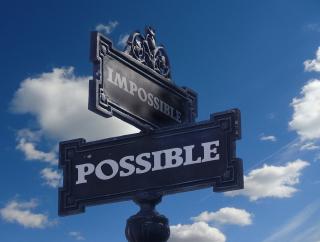Creative Conflict
By Connie Goodbread

As human beings we are conflict avoidant – until we are not. Then we are willing to destroy one another.
Conflict begins when there is more than one idea, opinion, or experience in the room. We are so conflict avoidant that we even avoid using the word conflict for this experience. We can’t see that in the beginning, when there are a bunch of different ideas in the room, conflict is creative. This creative moment is called by some studies, “creative disequilibrium” – the state we are in when we do not know the answer. When we are unsure.
Often when we are uncomfortable with not knowing the answer and being unsure, we seek certainty that we are right and have all the answers. We do not make room for the ideas, opinions, and realities of others. This reaction can rob us of that initial creative moment and push us into deeper conflict that eventually leads to destructive behavior. We get uncomfortable, defensive, and maybe even fearful or angry.
In the face of this discomfort, when we can’t see the creative opportunity before us, we either back off – stop the discussion — or we begin a debate, designing a game plan for winning. If it continues this way, we begin to argue, trying to prove we are right and others are wrong. We begin to use the language of war. If it continues this way, we begin to find allies and choose sides. We begin using us and them language and behavior. If it continues this way, we begin to plot ways in which the “other side” can be defeated. If it continues this way, we try to find ways to hurt and destroy one another as enemies.
This scenario plays out over and over – in families, congregations, communities, and countries. It’s human nature and yet….
We could, with our large brains, decide right here and right now to do it differently. How might we begin?
What if we began with a promise to ourselves to remember that none of us has the one and only reality, way, or answer? What if we come to the deeper understanding that there is not one right way? What if we admit we don’t know everything and that we are better together? What if we begin to be very serious about our role as caretakers of one another, and of this beautiful blue planet? What if that caretaking is the meaning of life?
What if we begin in Covenant – because this is what I have described here. A Covenant is first and foremost to the values we want to amplify in the world. What if we hold ourselves accountable to those values and call ourselves, first, back into Covenant? What if we practiced to understand first and then to be understood? What would happen?
When we disagree in Covenant – I have an idea and someone else has a different idea. I have an opinion and someone else has a different opinion. Someone has had a different experience than I have had. What if instead of getting defensive I began with curiosity and did my best to understand their idea/opinion or experience? What if the other person did the same thing? What would happen?
Not needing to be right – admitting that we do not have all the answers – being open to ideas, opinions, and experiences of others — will help us to be in and stay in creative tension — creative disequilibrium – where all that is possible is open to us. A different reality is alive in the room and we find ourselves in a place of creative tension. It is exciting. We find ourselves leaning into one another and the process. The discussion becomes lively. Creativity is high, we come up with better, richer ideas.
We are so much more, so much better, so much stronger together. Don’t doubt that for a minute.